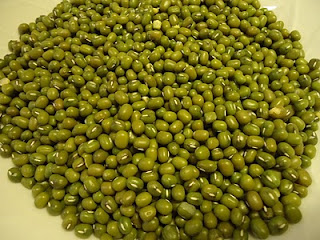You won’t find it on the menu of any self respecting Indian restaurant and while it’s disparaged as food fit only for the convalescent, it also happens to be what I’ve been eating exclusively for the last 40 consecutive days: kitcheri.
That’s right, since late February (right after a tea- and pastry-fuelled visit to Lisbon) I’ve been on the mung bean and rice monodiet. Coinciding partly with Lent and as part of my training to be a Kundalini Yoga teacher, it’s been my own personal spring clean. Kitchari is mushy and pre-digested making it easy for the digestive system to process. Eating it for a number of days consecutively gives the body a break from trying constantly to digest processed food, sugar, caffeine etc and gives it a chance to work on other parts of you. It also contains all the vitamins, carbs and protein you could ask for.
All of this means that I’ve eaten nothing but kitcheri for 40 days. It’s been my breakfast, lunch, dinner and all the naughty snacks in between…you don’t go hungry on this diet: believe, a pot of it goes a long way. Also known to some as baby food, mung beans and rice, mush, vegetable kedgeree and ‘that gluey curry thing’, whatever you call it I’m now a master at making it, having made some interesting additions to the standard mix of moongi dhal, rice, haldi and turka (fried onions, garlic and ginger) along the way. First I tried to give it a traffic light theme, adding red, yellow and green peppers (this I later avoided: they left an aftertaste that lasted hours). Then I tried it without salt, substituting it with tamari and paprika instead (better than it sounds). When I started to miss avocado, I threw some in (it was terrible. My regard for avocado has definitely diminished). When I became desperate to have something to chew, I added tofu (this felt like cheating but I decided that it wasn’t). Broccoli featured most days, because broccoli I can’t live without. I’ve heard of people adding in chocolate and mango: as long as it’s all cooked in one pot and as long as it’s cooked until mushy, it’s all allowed (so say liberal yogis).
They say that the first 3 days are the toughest and that was true for me. I had a headache threatening for the whole time and an awful coming-down-with-something taste in the back of my throat. I felt trapped by the restricted choice and mildly embarrassed to be the odd one out at the dinner table. That must have been when the detoxing was at its most intense as after those initial days, I actually felt locked into the diet, steady and secure. After that, I was happy to sit with friends in restaurants, to order nothing and just to talk while they ate. I was irritated by those that took pity on me, asserting that it was a choice I’d made. The magic was happening. Yes, there were challenges throughout. What did I do when I was out all day? Tupperware became my best friend and my microwave tracking skills became fine-tuned. What about when I felt like giving up? I reminded myself that it was all in the name of cleansing and wouldn’t last forever! What about when I craved food that wasn’t kitcheri? Why, I sniffed it, of course! And if it wasn’t available to be sniffed, I looked up recipes, wiped away the drool and saved them for later. Curiously, I started thinking about meat, which I haven’t eaten or desired to eat in 8 years. On those occasions I didn’t seek out any meat to smell and I don’t intend on going back to it but it is fascinating how the memory of food lingers in the system.
It wasn’t all sniffing and cravings though. The amount of energy I had is unprecedented. Lie-ins became unnecessary and rather than leaving me frazzled, going to work became just one element of a full and varied day. I have lost over a stone, an unanticipated but welcome kitcheri consequence. If we can talk about elimination for a moment, let me tell you, it becomes an absolute PLEASURE.
But what I have learned through this monodiet goes way beyond toilet business. What I have learned is that life is so much simpler when you’re not daydreaming about which biscuit to have with your next cup of tea. That’s if you’re anything like I was. My relationship to food has been exposed and reviewed. I was a tea and sugar addict (although I never took sugar in my tea) with no real grasp of the fact that the things one eats affect the way that one feels. In a way, it’s no wonder when sugar is so ubiquitous: over the course of my 40 days for example, I collected an impressive amount of sweets and chocolate that were given to me by colleagues and friends just on a day to day basis. At first, I expected that I’d be gorging on them at the strike of midnight on day 40. Then I was offered a generous alternative, a trip to the chippie to mark the end of the diet instead. Having spent this time eating such clean food, right now I don’t think I’d be able to stomach either option, and part of me feels privileged to be sensitised enough to reject processed food.
To you kitcheri, I say thank you for bringing me this awareness. I hail and honour you as my wonderfood. Although I might be off the monodiet now, I’ll never forget you, and I’ll never let you go.



